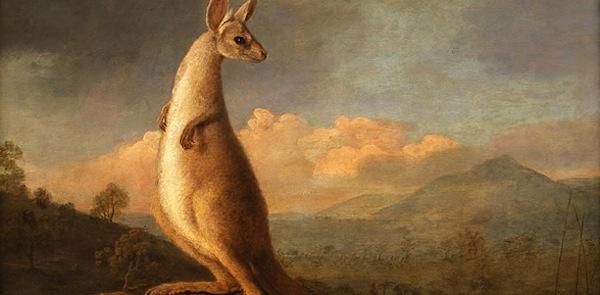A 19th century painting of a London park and two canvases by the animal painter George Stubbs could leave the UK unless nearly £10 million is raised to keep them here. ‘Richmond Hill in the Summer of 1862’, by American painter Jasper Francis Cropsey, has been awarded a temporary export bar by Culture Minister Ed Vaizey to provide a final chance to find the money to buy it. The painting has been in British collections since it was sold by the artist to pay off debts accrued by his extravagant lifestyle while working in London.
Born on Staten Island, New York, Cropsey was drawn to landscape painting, which had emerged in the early nineteenth century as the most innovative branch of American painting. He first visited Europe in 1847 and later returned to England, showing regularly at the Royal Academy.

The two paintings by George Stubbs that gave the British public its first glimpse of strange creatures from the “New World” are at risk of leaving the UK unless a matching offer from a UK buyer can be found.
Culture Minister Ed Vaizey has placed a temporary export bar on the two works “The Kongouro from New Holland (The Kangaroo) and Portrait of a Large Dog (The Dingo)” to provide a last chance to raise the £5,500,000 needed to keep the paintings in the UK.
As a major figure in British art history, Stubbs is well known as a painter of horses, dogs and sporting subjects; however The Kangaroo and The Dingo were amongst the very few creatures Stubbs was unable to paint from life. Instead, he worked from verbal accounts, and in the case of The Kangaroo, from slight sketches and inflating the preserved skin.
The paintings were first exhibited in 1773 at the Royal Academy, and were hugely important in bringing to public attention two of the animals which were to be most closely identified with the extraordinary and baffling new world of Australia. They were almost certainly commissioned by Sir Joseph Banks (1743-1820), immediately following his part in Captain James Cook’s celebrated ‘first voyage of discovery’ to the Pacific (1768-1771).
The Minister’s ruling follows a recommendation by the Reviewing Committee on the Export of Works of Art and Objects of Cultural Interest (RCEWA). The Committee recommended that the export decision be deferred on the grounds that the paintings were so closely connected with our national life that their departure would be a misfortune; and that they were of outstanding significance for the study of eighteenth century exploration of Australia and the public dissemination of knowledge during the Enlightenment.
“It would be a terrible shame if the UK were to lose these extraordinary paintings to an overseas buyer. They were the British public’s first introduction to these exotic animals from the Australasian New World which was opening up at that time.” – stated the Chairman of the RCEWA, Lord Inglewood.
The decision on the export licence application for the paintings will be deferred for a period ending on 5 August, 2013 inclusive. This period may be extended until 5 November, 2013 inclusive if a serious intention to raise funds to purchase the paintings at the recommended price of £5,500,000 (net of VAT, amount to be confirmed, which could be reclaimed by most institutions.)
Offers from public bodies for less than the recommended price through the private treaty sale arrangements, where appropriate, may also be considered by Mr Vaizey. Such purchases frequently offer substantial financial benefit to a public institution wishing to acquire the item.


